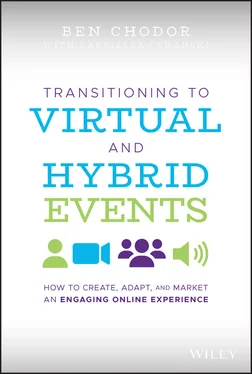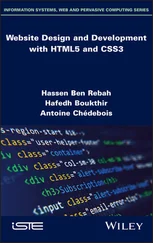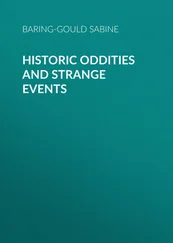LEVERAGING THE POWER OF VIDEO AT HYBRID EVENTS TO ENHANCE AUDIENCE ENGAGEMENT AND SATISFACTION
I have had the honor of working on a lot of truly innovative and amazing virtual and hybrid events, so I asked a former client and collaborator to give an example of one of his hybrid events from the pharmaceutical industry. This is a hybrid event that I had the privilege of working on with Spiro Yulis, CEO and Founder of SkyArx, a pharmaceutical and healthcare marketing and event company.
A global top 10 pharmaceutical company was launching a new respiratory product and wanted to include virtual events as part of its promotional strategy for communicating with health‐care professionals. The marketing team had experienced limited success with traditional webcast programs for other product launches and was looking for a more innovative, engaging, and personal virtual solution.
After consulting with the client on a variety of approaches, they decided on the delivery of a hybrid solution broadcasting to live and virtual audiences.
The primary speaker for the series, an international thought leader in respiratory medicine, presented as part of a live dinner program in front of 75 physicians at a restaurant in a major market. His presentation was broadcast to audiences at 15 other live dinner programs across the U.S. as well as hundreds of at‐home viewers.
We featured all these remote audiences across the country on‐camera as part of the broadcast to create a sense of connectedness among participants and foster a more personal and engaging question‐and‐answer session. We also enabled audiences from their homes or offices to participate and ask questions as well.
Each live program site was staffed by a single‐camera broadcast crew to capture audience activity that was integrated into the broadcast. The show opening included a “round robin” of live introductions of each location, where the local pharmaceutical representative program host shared a greeting from their audience with some local flare. Live footage from the sites was peppered in throughout the broadcast, with a fun and lively second screen gamification activity mid‐program to keep the audience energized.
Participants from all sites were invited to ask the speaker questions live, on camera, at intervals during the broadcast, showing in split‐screen with the presenter. Offering a real‐time, on‐camera, verbal exchange with this national thought leader was a big draw for them, and a differentiator from typical webcasts where audiences are limited to typing their questions into the perceived “great abyss” of a webcast platform, only for them to go unaddressed during – and after – the program. The “1:1” live interaction with the speaker and the ability for each of the live sites to see each other on camera were definite keys to success.
The final participant total (live and at‐home) was a record for this company's virtual events in the respiratory category.
Results:
Registration for the event was 77% higher than that for the company's previous product launch webcast. The program format created significant buzz with physicians, who then recruited colleagues, including some from practices previously flagged as inaccessible. The program also opened many doors for the sales team.
64% more participants joined this event than this marketing team's previous satellite national broadcast.
In a post‐event survey, 82% of participants reported that this was the most engaging hybrid virtual event in which they had participated. The real‐time “face‐to‐face” interaction with the speaker and a feeling of connectedness with the other live sites were cited as the top two reasons.
The company's leadership team was so pleased with the event and resulting product inquiries that they replicated this model across three following product launches.
ADDRESSING COMMON MISCONCEPTIONS AND MYTHS ABOUT VIRTUAL EVENTS
When I started out in the streaming business in 1998, people still had fax machines, high‐speed internet at home was a luxury and didn't exist in many locations, and streaming video was not HD quality and was the size of postage stamp and then a playing card. When you started a new job you probably got a desktop as opposed to a laptop computer. Oh, and to give you some context, the iPad was still 11 years away and the iPhone was still 9 years away. Also just to give more perspective, Joseph W. Lechleider, who is credited for being one of the inventors of high‐speed internet, was probably never thinking about sending video over the internet; 4G internet was not launched in the United States until 2010. With 5G launching globally now, the ability to receive amazing quality content anywhere in the world is now well within reach.
In the early days of the internet, online events and webinars were a small part of the events business and, quite honestly, an afterthought for event planners and conference planners.
Cutting‐edge advancements in video, audio, and integrated communication technologies have made it possible to do much more online. Gone are the days when companies were forced to deal with bulky, unintuitive webinar programs that produced poor‐quality video or choppy, broken audio. Webcasting technology that unites high‐quality, crystal‐clear audio and video, PowerPoint, live chat, and Q&A into a single streamlined interface has removed technological barriers for large and small businesses. Now all you need is a strong internet connection and you can deliver a TV‐style broadcast right from your home.
And with all these advancements, there is still a lot of resistance and uneasiness because of the misconceptions around virtual events.
Before we go any further in the book, I want to take you through all the myths you're going to hear and tell you exactly why they are not based in fact.
Myth #1: My virtual event or hybrid event will cannibalize my physical event attendance
Reality:I talked about this in earlier examples, but I'd like to give you another. A good friend of mine puts it like this: every year there are only about 70,000 total tickets to the Super Bowl. If I don't get a ticket, does that mean I'm not going to watch? Of course not; I'll watch but it will just be a different experience, and usually a cheaper one.
The reality doesn't support the cannibalization myth, but instead it shows how you should be thinking about the bigger picture. If you only offer an option to attend a physical event, you're leaving out a large segment of your prospect universe that won't get to see any of that content or engage with any of those attendees. You're missing an opportunity to extend your reach to a global audience that you were never in front of before.
For those determined to attend the physical event, your repeat customers, they fight each year for the travel and budget approval to see customers and partners face to face, and they're not going to give that up.
Myth #2: It can't be monetized, and I'll lose my sponsor and attendee revenue streams
Reality:Any good virtual event platform will have the option for you to collect attendee registration fees. Plus there are a number of customizable elements that can be monetized for exhibitors and sponsors to provide visibility, thought leadership opportunities, and custom messaging throughout the event experience. If it's customizable, it's monetizable.
Myth #3: It's not interactive; people will just be watching presentations
Reality:This couldn't be further from the truth. A virtual environment offers participants the option to participate in live polls during a session. Based on those poll results the speaker can pivot within the presentation to put more emphasis on areas of the topic attendees said they want to hear about.
Читать дальше












